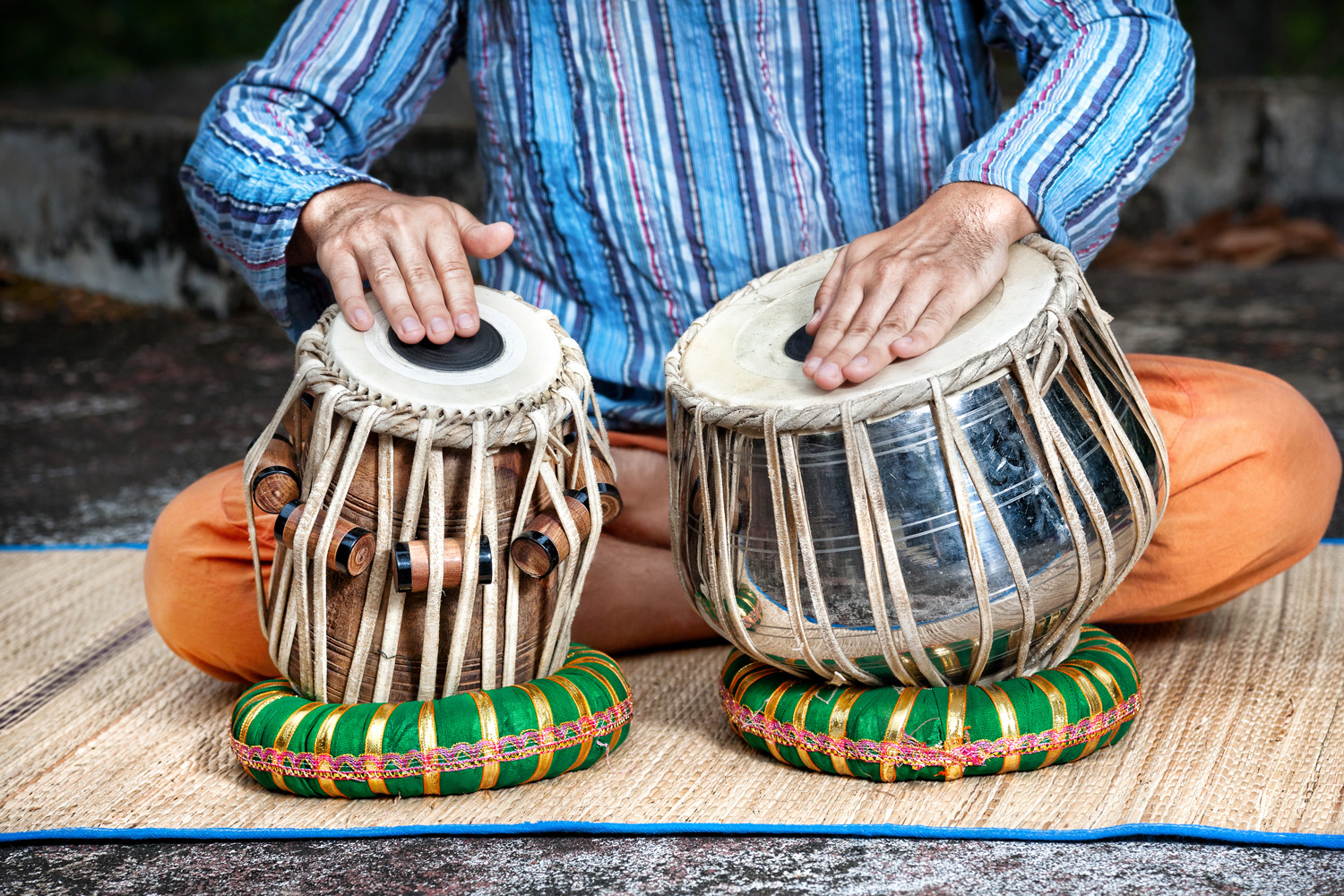Tabla, << TAH blah, >> is the name for a pair of drums played in Bangladesh, northern and central India, and Pakistan, as well as in Afghanistan and Sri Lanka. The tabla is an important percussion instrument in the popular, classical, and religious music of this area. The tabla is used to accompany both instrumental and vocal music as well as classical dances. The tabla may also be played as a solo instrument. The name tabla comes from an Arabic word that means drum.

In performance, the two drums are placed on rings on the floor in front of the player, who sits cross-legged. Both drums are tilted forward slightly. Tabla players use their fingers and palms in various ways to create a wide variety of sounds.
The smaller drum is a wooden cylinder about 12 inches (30.5 centimeters) tall. It is usually played with the right hand and is called the dayan, or tabla. The dayan is typically tuned to the key note of the music it accompanies. The larger, kettle-shaped drum is usually played with the left hand and is called the bayan. It is commonly made of metal—usually brass, copper, or nickel—though clay and wood are also used. The bayan has a deeper sound. The heel of the hand is used to apply pressure or a sliding motion at the edge of the bayan to change the pitch.
The heads of both drums are covered with goat skin. The head of the dayan measures about 6 inches (15.2 centimeters) across, and the head of the bayan measures about 9 inches (22.9 centimeters) across. An outer ring of skin overlays the main skin and serves to modify some of the instrument’s natural overtones. The two skins are bound together with woven braid.
Each drum has a large black spot, called a syahi, on its playing surface. The spot is a gummy paste made by heating flour, soot, and iron filings with water. The syahi affects the acoustic properties of these drums and clarifies their sound, creating the ringing tone and clear pitch that are important characteristics of the tabla.
The creators of the modern tabla borrowed shapes and methods of construction from much older Indian drums and drums from western Asia. The earliest depictions of the instrument appear in paintings from northern India in the early 1800’s. However, the tabla has been in existence in various forms since the early 1700’s.
